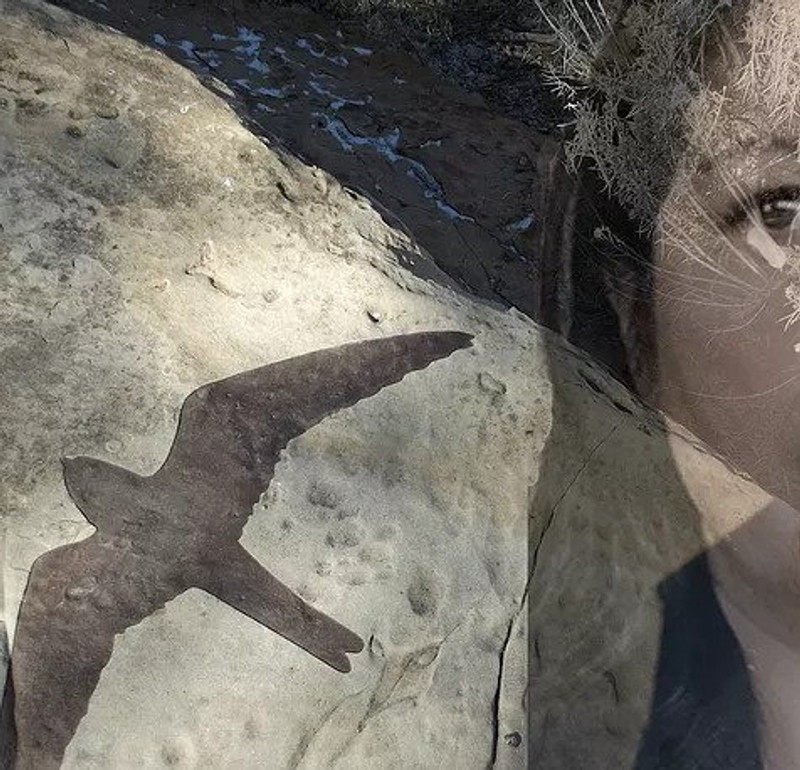Not so long ago we understood each plant and every animal as a living, breathing, interconnected part of the earth. The way I heard it from the old people, the grasses on the Earth are like cilium, the tiny hairs on and in our body that move in response to air and water and convey information between our cells. In our human bodies, defective or insufficient cilium can contribute to cognitive impairment, hearing loss, sterility and kidney failure. Our old people knew this was similar for the Earth, that the grasses are the way our Mother Earth communicates information between her cells, which are not only made up of soil and mitochondria but include all of the other sacred elements that support and build Life.
Working in Native Foods Nursery a couple of weeks ago I had the opportunity to pot up some of the bunch grasses that Justin had there - Slender Hair Grass, Wild Blue Rye, Indian Ricegrass, and several others. There's something about getting my hands in the dirt in the early Spring and working with tender sprouts that thaws both my heart and body after the cold of winter. I especially like working with Native plants because of how vital they are to the restoring of the land and to re-storying of our narrative on the planet from vicious violence to hopeful renewal. Working with those baby grasses felt especially necessary to my spirit at this time. It’s a way of reassuring myself that I/we might be okay, that somehow it might all work out for us.
There's a funny thing about me that you need to know. I'm really bad at people's names. But I don't want to be. It creates these really awkward moments sometimes. As a way of navigating this malady, I make up names that actually make sense to me. Names of plants can really stump me sometimes. Something about their Latin naming seems out of sync and incongruent. So I give them new names with the bits of language that I borrow from my husband who speaks fluent Shoshone.
Weeks ago I was working with; Deschampsia cespitosa or Deschampsia elongata. All that I could figure from the Latin was elongata, or long, but I knew it's common name as Slender Hair Grass. So I gave the grasses a new/old reclaimed name; hubijo bunggesuh or The Old Woman's Long Hair. Imagine my friend's confusion when they asked what grasses I was working on so they could check it off on the nursery spreadsheet and I said “hubijo bunggesuh”, and then realizing that wouldn't be on the spreadsheet and doing the long translation back to its Latin name.
In this time of removing monuments dedicated to patriarchal violence from public spaces, Native peoples are also reclaiming place names as a key strategy to decolonizing the Earth. It is not enough that we do different things, we must think differently about everything we do and who we believe ourselves to be. Renaming opens up worlds of understanding and relating that indigenous people have known since time immemorial. Re-naming and re-cognizing, or rethinking, the grasses is a way of reclaiming our sacred functioning with each other and bringing our relatives home.
It was truly an honor to work with grasses in the nursery. To hold those seedlings in my hand and to see them in my mind's eye as my Native ancestors once knew them: as the hair and the mind of our ancient mother. To imagine those yellow green strands like those of an old woman with really long, silver hairs blowing in the breeze. To imagine the Sun shining down on fields and fields of beautiful native grasses, growing along the waterways, across the prairies, swaying in gentle rhythm with the wind and making home to the birds and other small creatures.
To my way of thinking, these grasses are a living connection to something that I am in need of. A way of living, breathing, listening that is difficult for us as human beings. These grasses were here to remind me of an older way of caring for the Earth that my ancestors knew. I recognized my response-ability to care for them, to sing and pray for them, to live in relationship with them. I saw too that perhaps I/we are here to call them back to their sacred functioning, to remember a time with them when the bunch grasses were plentiful and abundant and the soil and water was rich in its life giving intelligence. Working with those plants, singing to them as I packed soil around their roots and raised them to the Sun, asking for the Sun's light and intelligence to energize and inform their being, I recognized that this was as much a prayer for myself and for our own pitiful human existence.
With that I offer these words in service to the cillium and hubijo bunggesuh and our shared remembering:
we stand humbled
to the ways of being
woven, broken,longing to be
rewoven with Creation.
we stand humbled
to the ways of listening
to the songs of the grasses, deer and buffalo
to the songs and rhythms
that heal our bones
and tend our souls.
we stand humbled
to what lies dormant within us
awakening to whispers
of a new song, an old song
a re-membering
a re-weaving
of our cells together.
in humble service,
Gemma
Gemma Benton is Menominee and Filipino and lives in Dexter, OR with her husband Bear and their little parrot, Naivi. Gemma is a mother and grandmother, writer, artist and author of the “Healing Her Story” oracle deck. She advises and works at Native Foods Nursery. She and Bear enjoy spending time working on Native language and are traditional singers. You can learn more about her at gemmabbenton.com
